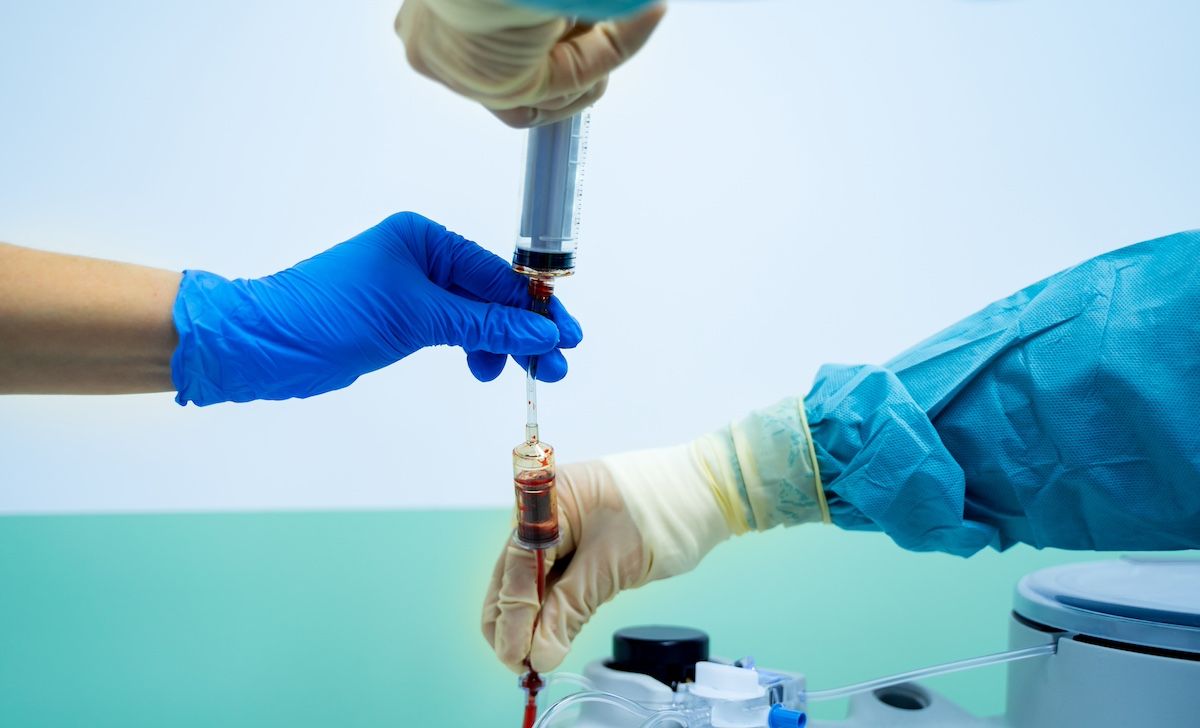- Center on Health Equity & Access
- Clinical
- Health Care Cost
- Health Care Delivery
- Insurance
- Policy
- Technology
- Value-Based Care
HCT Outcomes Show Improvement With Posttransplant Cyclophosphamide
Post–hematopoietic cell transplantation (HCT) prophylaxis using cyclophosphamide to stave off graft-vs-host disease had positive results compared with calcineurin inhibitor–based prophylaxis, regardless of whether the patient had a matched or unmatched donor.
Three-year overall survival (OS) and graft-vs-host disease (GVHD)-free relapse-free survival (GRFS) both improved following hematopoietic cell transplantation (HCT) and prophylaxis with cyclophosphamide vs calcineurin inhibitors (CNIs) to stave off GVHD, according to a large-cohort analysis in the Journal of Clinical Oncology.1
Patients in this analysis had either a human leukocyte antigen (HLA)-matched unrelated donor (MUD) or a mismatched unrelated donor (MMUD).
"Our novel research is transforming how blood stem cell transplant is practiced by expanding how we define who is a suitable donor for a patient in need. The data now show physicians and patients that surviving and leading a life free of life-threatening graft-vs-host-disease is not only possible—it's highly probable,” coauthor Steven Devine, MD, chief medical officer, NMDP (formerly National Marrow Donor Program/Be The Match), and senior scientific director, The Center for International Blood and Marrow Transplant Research, told The American Journal of Managed Care®.
For both groups—matched and unmatched donors—cyclophosphamide improved OS (HR, 0.96) and GRFS (HR, 0.90). Also, compared with MUD HCT and CNI, OS improved after MUD HCT with cyclophosphamide (HR, 0.88), and GRFS improved with cyclophosphamide after either MUD (HR, 0.61) or MMUD (HR, 0.68) HCT.
Patients of all racial backgrounds benefited equally from cyclophosphamide prophylaxis.
At present, a non-Hispanic White patient has a 75% chance of being HLA matched with an unrelated donor, and a non-White or Hispanic patient, 15% to 45% | Image Credit: Vadim - stock.adobe.com

Differences in OS between MUD and MMUD HCT continued to be observed after CNI-based GVHD prophylaxis without PTCy, suggesting that the results are not due to recent changes in supportive care, the authors stated.
This study included 10,025 adult patients who underwent HCT for acute leukemia or myelodysplastic syndromes. The median patient age was 60.7 years, and the median follow-up was 36.6 months. Researchers used data from the Center for International Blood and Marrow Transplant Research for 2017 to 2021.
“Notably, a substantial proportion of patients with minority ancestries (48%) were enrolled, underscoring the potential of [posttransplant cyclophosphamide] MMUD HCT to broaden donor options for all patients. There is a scarcity of contemporary, large-scale studies comparing matched and MMUD HCT outcomes using real-world data in the era of novel GVHD prophylaxis agents,” the authors wrote.
Currently, the odds for a non-Hispanic White patient to be HLA matched with an unrelated donor in the NMDP registry is 7, and a non-White or Hispanic patient to secure a viable match varies from 15% to 45%, the study stated.
Researchers also discovered an unexpected finding: a lower incidence of chronic GVHD in MMUD using CNIs compared with MUD with CNI. They hypothesized that this result may be owed to greater use of antithymocyte globulin in the MMUD cohort and early mortality among MMUD, which caused the removal of patients with the most alloreactive donors.
HCT involves the intravenous infusion of hematopoietic stem and progenitor cells to boost marrow and immune function in patients with acquired and inherited malignant and nonmalignant disorders. These disorders include hematologic malignancies such as leukemia, lymphoma, and myeloma; nonmalignant acquired bone marrow disorders; and genetic diseases associated with abnormal hematopoiesis and function, such as sickle cell anemia.2
“For transplant physicians, researchers, patients, caregivers, and families, this is a message of hope that significantly expands options to patients who lack a fully matched donor—while providing survival and posttransplant complication rates that are comparable to a fully matched donor,” Devine noted. “Ultimately, we are giving more patients another chance at life and breaking down the barriers to access transplant for all patients, regardless of their ancestry."
References
1. Shaffer B, Gooptu M, DeFor T, et al. Post-transplant cyclophosphamide–based graft-versus-host disease prophylaxis attenuates disparity in outcomes between use of matched or mismatched unrelated donors. J Clin Oncol. Published online July 17, 2024. doi:10.1200/JCO.24.00184
2. Hematopoietic cell transplantation. Cancernetwork.com. Accessed July 24, 2024. https://www.cancernetwork.com/view/hematopoietic-cell-transplantation
